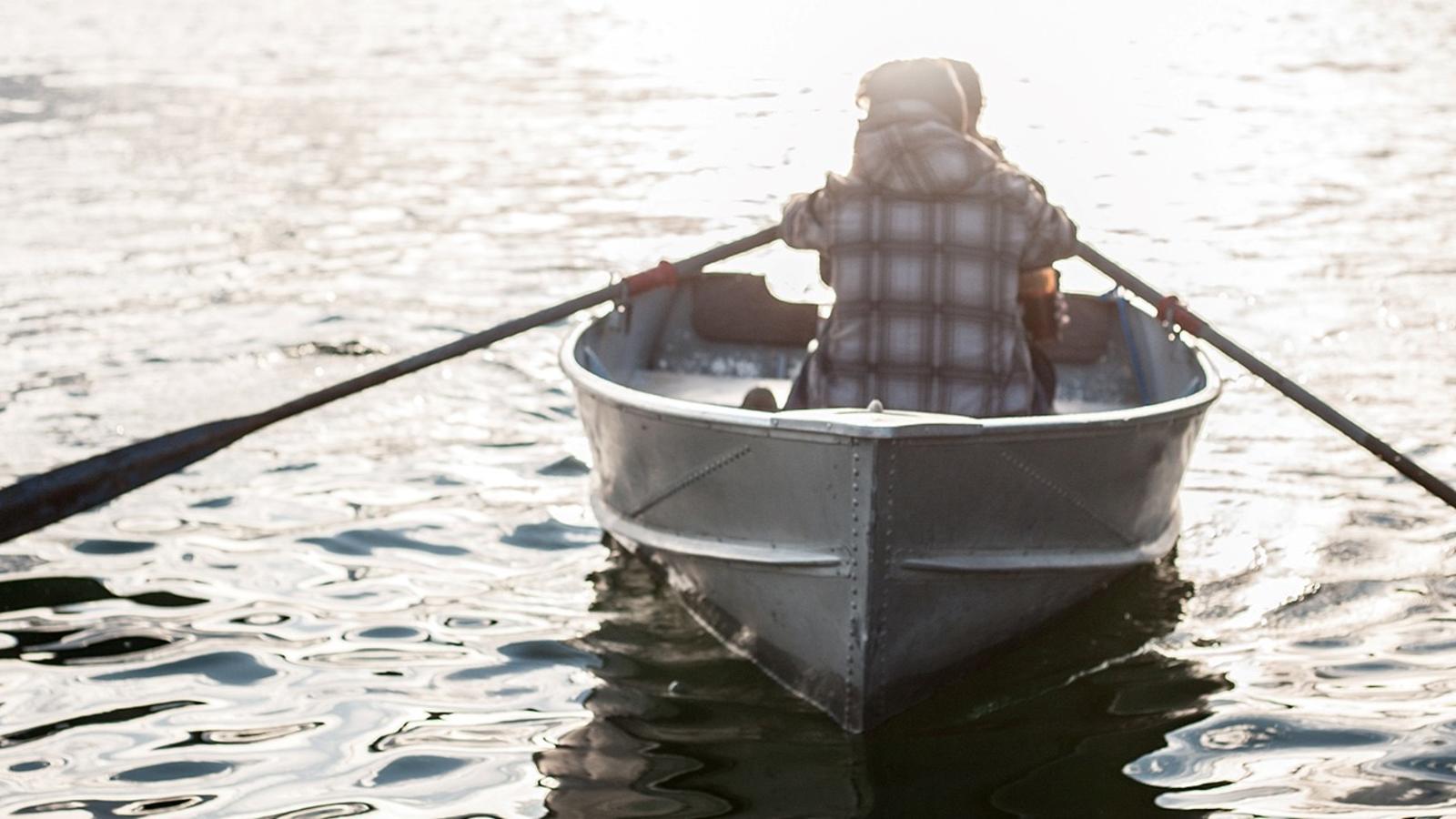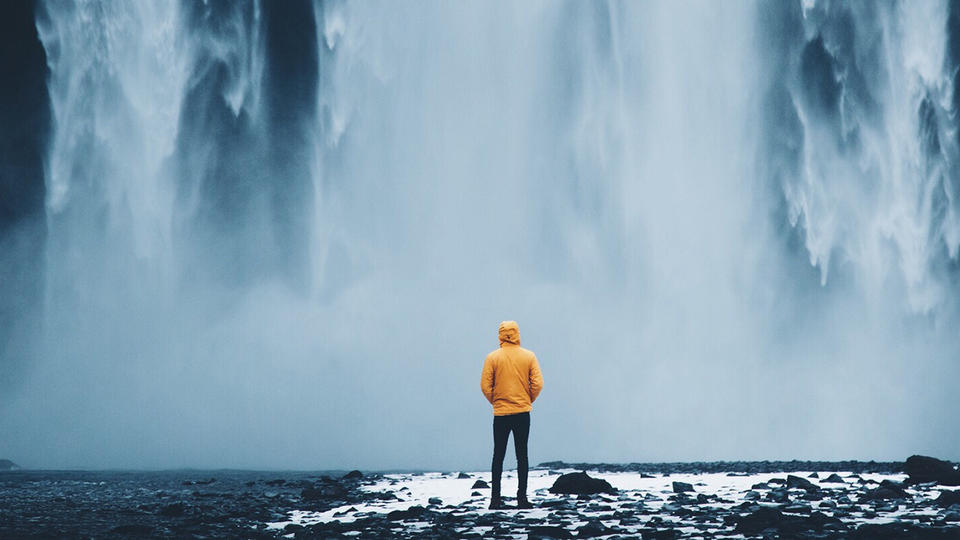
Slow Going
The Long and Winding Road: Travel Joins the Slow Revolution
By Sarah Viren
The Long and Winding Road: Travel Joins the Slow Revolution
This article first appeared in Fall 2016 Rice Business magazine. Sarah Viren is a professor at Arizona State University and author of the book MINE.
When Chris Bolding took her family to Panama on a recent vacation, she made sure they stopped by the famous canal. But after that, she, her husband and their three teenage kids did their best to stay off the beaten path. They traveled through the mangroves with local guides, wandered into a bat cave where the water went up to their chests, visited a little-known coffee plantation, and spent a long weekend on a remote island without any cars that they could see or—as they soon learned—ATM machines. At one point, Bolding’s husband embarked on a four-hour boat ride to another island to get cash, but even that inconvenience was worth it, says Bolding, a Rice Business graduate (’98) with more than 18 years of experience working in the travel industry.
Though Bolding probably wouldn’t have classified her vacation as such at that time, her Panama trip is a good example of a relatively new tourist trend known as “slow travel.” Rather than flying in and out of a tourist hot spot for a rushed week of must-see sites, slow travelers try to live by that age-old adage about the journey trumping the destination or experience being more important than acquisition. They advocate taking the scenic train through the Alps, spending a month walking the Appalachian Trail, or renting a house in the French countryside for a week and getting to know the locals and local cuisine.
Or as Bolding, now director of business development at Sabre Travel Network, likes to tell her children, “The fact that you saw the Sistine Chapel or the Panama Canal might get one mention in a conversation, but those stories about the people you met or the food you ate or the experiences you had are the ones you’ll tell again and again.”
As a movement, slow travel has its origins in the slow food revolution, which began in the late-1980s in Italy in response to the first McDonald's opening up in Piazza di Spagna, Rome. Slow foodies believe in local farming, in preserving traditional food preparation customs and cuisines, and in eating communal meals. Their fervor has since ignited a whole host of similarly “slow” movements: slow cities, slow parenting, slow art and even slow sex.
The driving force behind much of this is a sense that, as we’ve become more time-efficient and technology-drive, we’ve also lost track of what makes us happy, healthy and—well—human. In Carl Honoré’s book, In Praise of Slowness: Challenging the Cult of Speed, the self-declared “globetrotting ambassador for the Slow Movement” describes his own awakening as the moment when he found himself almost buying a collection of one-minute bedtime stories to read to his children at night.
“These days, the whole world is time-sick,” Honoré writes in the book’s introduction. “We all belong to the same cult of speed.” His solution, of course, is to slow down. And it’s a message that’s found an audience. Honoré’s book has been translated in to dozens of languages since it was first published in 2004 and was later called the Das Kapital of the Slow Movement by the Financial Times. Though the book didn’t address slow travel when it came out, Honoré later claimed that this branch of the movement was “the most exciting and, certainly for us today I think, the most relevant front in the slow revolution.”
In many ways, though, slow was always the way we traveled—at least until recently. Some of our most famous travel writers and adventurers moved slowly out of necessity. Marco Polo’s trips to China by boat and camel-back later inspired other adventurers including Christopher Columbus. Meriwether Lewis and William Clark spent more than two years, by horse and by foot, exploring the territory west of the Mississippi. In one journal entry from that exploratory trip, Lewis almost sounds like a modern-day slow traveler espousing the joys of taking one’s time while moving through the landscape.
“The buffaloe (sic) Elk and Antelope are so gentle that we pass near them while feeding, without appearing to excite any alarm among them,” he wrote. “And when we attract their attention, they frequently approach us more nearly to discover what we are.”
Things only began to change for travelers as technology advanced: The train came along and then the automobile and finally the plane, and along with these new modes of transportation came the rapid construction of highways and hotel chains and fast food restaurants, all of which has made travel more accessible to more people, and also much quicker.
Ironically, technology is also what is now allowing tourists to return to their slow traveling roots, so to speak. Bolding remembers a family vacation to France when she was in high school and her mom lugging around a big book of bed and breakfasts listings—the only way then to find accommodations with a more local touch.
Now, as Constantine Hallax, another Rice Business graduate (’01) working in the tourist industry, explains, internet upstarts like Airbnb make staying with—or getting a ride or buying a meal from—a local much easier than it was in the past.
“Everyone is seeking uniqueness in travel,” he says. “And the technology that exists today can provide you with that.”
Hallax, who previously worked for Travelocity and is now vice president of business development for TripCase, a travel application developed by Sabre Travel Network, says traveler review sites are a good example of technology aiding slow travel trends. By allowing tourists to read and share opinions about trip itinerary, sites like TripAdvisor and Gogobot can give potential travelers the confidence to go off the beaten path or stay at a nontraditional lodging that they might have avoided—out of fear or lack of knowledge—in the past.
Apps, Hallax says, are also making it easier for travelers to plan more complicated trips without the assistance of a travel agency or local contact. There are apps now to help travelers quickly figure out the exchange rate, learn key phrases in a new language, trace one’s wanderings through an unknown town or city, or coordinate lodging, food and transportation plans.
Hallax’s company recently developed an app feature called SafePoint for TripCase that allows employers to monitor world events, and if anything happens—from a terrorist attack to a flood—to locate and contact employees traveling and working abroad or domestically.
“The world is becoming more dangerous,” Hallax notes. “But technology and these other tools will help mitigate some of these concerns.”
The ecotourism movement, and environmentalism in general, has also had a hand in popularizing slow travel. As Janet Dickinson, professor of tourism at Bournemouth University, explains in her book Slow Travel and Tourism, traditional modes of “mass travel”—via airplane, staying in chain hotels, etc.—tend to leave a larger carbon footprint than embarking on a pilgrimage, say, or staying two weeks in a remote village somewhere off the beaten path. This means that slow travel can often also equal more sustainable travel.
And on this front, the slow traveler has a whole host of resources at her fingertips. Organizations like the International Ecotourism Society help evaluate and publicize legitimately ecological trips and locales while private sector companies such as Expedia are beginning to offer “green” search options for those looking to find sustainable travel or lodgings options.
Money, however, can also be a driving factor for those opting to travel slowly. Though slow travel is not always cheaper, it can be, and those on a budget might find slower forms of tourism more appealing monetarily and philosophically. The great American road trip is said to be making a comeback in recent years for that very reason.
In a recent survey by AAA, road trips were the number one vacation choice for Americans, followed next by trips to national parks. Sarah Schimmer, a spokeswoman for the organization, said the slow pace of a road trip is appealing for nostalgic reasons but added that there is also a practical side to travelers’ decisions to drive instead of fly.
“What we are seeing is that more people are taking road trips and are being inspired to take road trips because gas prices are so low,” Schimmer notes.
Slow travel is still more popular in Europe than the United States in part because the movement began there, but also, as Dickinson explains, because the infrastructure and long holiday traditions in Europe are more accommodating to the slow traveler.
“It’s not uncommon for Europeans to take a one-month holiday which enables people to take time traveling,” Dickinson notes. “It is more difficult to invest in slow travel when your holiday is shorter—it limits how far you can go.”
Still, that doesn’t mean Americans are saddled to fast travel forever. Bolding sees the recent popularity of riverboat tours—especially as an alternative to the cruise ship vacation—as one example of a slow travel trend in the United States. And, she says, the fact that many Americans are now adapting to more overlap between their work and home lives means that lots of potential travelers, herself included, are finding ways to take longer vacations—with the idea that they’ll do a little bit of work here and there while traveling.
“I just took a 16-day trip, and I said, two mornings on the trip, I’ll answer some emails; I’ll do some work.”
The popularity of travel memoirs like Wild by Cheryl Strayed, which chronicles her 1,100-mile trek along the Pacific Crest Trail, and A Walk in the Woods by Bill Bryson, about traveling the Appalachian Trail, also indicate that the old-fashioned pilgrimage—a staple of slow travel—might be finding new life in the United States along America’s trails. According to the Appalachian Trail Conservancy, more than 4,000 people hiked the entire 2,180 miles of that trail in the 2010s, up from about 1,500 hikers in the 1980s. The USDA Forest Service reports that both day hiking and camping are much more popular now than they were in the 1980s, with about a third of all Americans saying they enjoy hiking and a quarter saying they’ve recently camped.
Advocates of slow travel, including the travel writer Nicky Gardener, author of the “Slow Travel Manifesto,” also point out that trips don’t have to be long or even require that much distance to count as “slow.” In her manifesto, published at the travel web site Hidden Europe, Gardener writes that one of the best ways to travel slowly is to start at home. She encourages would-be-slow travelers to walk or take a bus one day rather than driving or to check out a church or cafe they’ve noticed in their neighborhood but never had the time—or perhaps never made the time—to visit in the past.
“The key to slow travel is a state of mind,” she writes.


